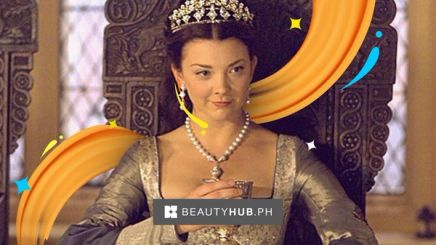
Period dramas always stun viewers with glorious costumes, steamy romance, and so much backstabbing. But what they left out was the everyday struggle of women in the Middle Ages. These days, you have a full and a in your arsenal. But medieval beauties had to make do with limited resources to become the fairest of them all.
If you think medieval women adorned their skin with DIY ointments made from hand-picked flowers, prepare to be surprised. Here are some beauty tips from the Middle Ages that will make you glad to live in the 21st century.
Overplucked the Eyebrows? Use Rodent Fur
Just like many of us still recovering from ’90s , women in the Middle Ages had to deal with the aftermath of overplucked eyebrows. Their solution was to glue mouse skin on their face. They would put the fake brows inside a box and glue them every morning. Some even dyed the mini wigs brown or gray to match their natural hair color.
Not at all in the mood to catch mice at night? Just burn a clove, no biggie! The burnt end deposited a faint ashy color to fill the sparse eyebrows. However, this trick was more suited for the colder seasons since it was not as sweatproof as rodent hair.
Conceal with Lead Powder
Medieval ladies served looks that killed – literally. Tins of powdered lead were a popular cosmetic to , smallpox scars, and other blemishes. But since the powder didn't stick very well to the skin, they would mix it with egg whites which hardened and produced a matte finish. Adding alabaster powder was also essential to create that pale-white look that was so popular in the past.
Fortunately, technology has advanced, giving us a wide range of safe-for-skin makeup. Skip the lead and reach for POND'S UV Bright Sunscreen protect your skin and brighten dark spots.
Pick Some Berries for a Lip and Cheek Stain
Doing a "" makeup look was not as simple as it is today. Women had to make lip stains with crushed fruits, roots, or flowers. The paste would be mixed with fat and applied like a balm on the lips and cheeks.
If they didn't have the time to harvest berries in the morning, they would bite their lips or pinch their cheeks to have that natural, rosy look. Sounds a bit tame compared to other tricks on this list, but lipstick is a much easier option.
Use Pee to Remove Hair
Egg-shaped faces were in vogue during the Middle Ages, but not everyone was genetically blessed with them. Plucking each hair to make the forehead look bigger was too tedious, so Queen Elizabeth I invented an out-of-the-box hair removal technique. She famously used pee, walnut oil, and vinegar to remove unwanted facial hair. And if you shudder at the use of urine, historians claimed many took it straight from their cat’s litterbox. Did it work? Yes, surprisingly. Was it worth it? Not even a little bit.
It's not all. Socialites had another hair removal method up their sleeves. They would rub a concoction of ant eggs, vinegar, red orpiment (a gemstone), and ivy gum on their skin for their nether regions. If the market ran out of ant eggs, the alternative was an arsenic rinse!
These recipes did the job, but going au naturale might have been healthier. It really is a shame that the first razor wasn’t invented until the late 18th century.
Cleanse and Brighten the Face with Rotten Barley
, an influential medical practitioner during the 11th century, was possibly the first to suggest a multi-step skincare routine. One of her go-to steps was to wash the face with barley that you soak in water until it rotted. The spoiled grains would be ground and mixed with fresh water. Supposedly, the recipe could lighten the skin and clean any impurities. The smell, however, was an inconvenience.
If you want to revive dull skin and fade acne spots, you can leave the barley recipe in the past and use Dove Facial Cleansing Mousse Brightening Care. It gently cleanses and exfoliates the skin without stripping its natural oils. Plus, it doesn’t smell like rotten seeds!
Safe to say, we’re glad that these extreme beauty tips stayed in the Middle Ages. Without their trials and errors, modern cosmetics wouldn’t have existed. So, embrace the fragrant bottles and fuss-free implements on your dressing table. Thank modern tech that you’re not still hunting rats to fill in your eyebrows.